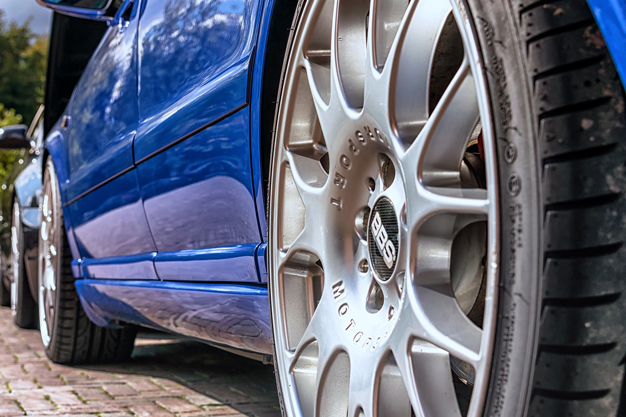- December 30, 2021
- By Robin Sooklall
- In Alloys, Repairs, Tires
- 857
- 0

Alloy wheels are now a common asset to most cars and enhance the look of the vehicle. Scuffing or scraping your alloy can be devastating, it ruins the look of the car as well as lowers its value. It is very annoying and leaves you in desperate need of repair. It is also essential that damaged alloys on a hired or leased car are repaired prior to returning otherwise, you could be facing a hefty bill.
There are various methods of repairing alloy wheels. Here at MobileCarBodyRepairs.com, we have a dedicated alloy wheel repair specialist who provides a ‘same day service’ refurbishing alloy wheels by hand to the highest standard possible making the alloys look as good as new. We can also repair different types of wheels, including diamond cuts, and can customise wheels to your liking, for instance, colour changing to any colour of your choice, 2-tone coloured wheel and many others.
Mobile Car Body Repairs are specialists in refurbishing alloy wheels and we will confidently undertake any such jobs, unless your wheels have corroded, in which case, a different method of repair will be required.
Refurbishing by hand – Our Method
We begin by raising the vehicle up from the ground safely using car jacks so that we can remove the wheels from the vehicle. The tyres are then debeaded from the alloys providing the space to work around the alloy’s rim. The alloy wheel is deep cleaned with a degreaser to remove all grime and oil. Once dried, we commence the process of sanding every single scuff, rust spots and chips from the alloy with many different grades of sanding paper by either machine or hand depending on the area being worked on.
Once completely smooth, the alloy is masked up in the areas we want to protect and de-greased again ready for primer. Once the primer is dry, the alloy is then lightly sanded to remove any ‘orange peel’ effect and/or blemishes which is essential to ensure the perfect shiny finish.
The alloy is then sprayed with the base coat (the colour of the alloy e.g., silver, gloss black, anthracite). Once the base coat is dry, the alloy is then sprayed with a clear coat (lacquer) to protect the base coat. It is imperative that the base coat and clear coat are applied carefully and thoroughly getting into every single blade and gap. The alloy is then heat-treated using infer-red lights to cure the paint and aid the drying process.
Finally, once dry, the tyre is pumped back up, to the vehicle’s recommended P.S.I. tyre pressure, and the wheels are put back onto the vehicle.
Now all safe and sound, the wheel looks shiny and new and no one would ever know it was scuffed or repaired.
Powder Coating Alloy Wheels
This is a dry finishing process using finely ground particles of pigment and resin mixture that are sprayed onto electrically grounded parts so that they stick to the alloy. The charged powder particles adhere to the part and are fused into a uniform coating in a curing oven.
Powder coating tends to give a thicker, more resilient and uniform surface that is resistant to many forms of casual damage. It’s an alternative process to simple painting that can make your wheels look great.
Advantages of Powder Coating
Disadvantages of Powder Coating
Repairing Diamond Cut Alloy Wheels with Lathe
With a traditional alloy wheel, it’s painted either by powder coating or wet spray technique to stop weather corrosion. With diamond-cut alloy wheels, they’ll have a part polished metal face with a layer of lacquer over the top for protection.
Diamond cut alloys require a lathe to be refurbished. The alloys are first removed from the vehicle and are repaired using a lathe, which removes old layers of lacquer and paint, providing a smooth surface for repairs.
You can typically repair diamond cut alloy wheels once or twice. Our technician would assess your alloy wheels and advise accordingly.
Our services are delivered by friendly, highly qualified technicians with the latest equipment. We can come to you or you can visit our SMART repair centre.
BOOK APPOINTMENT